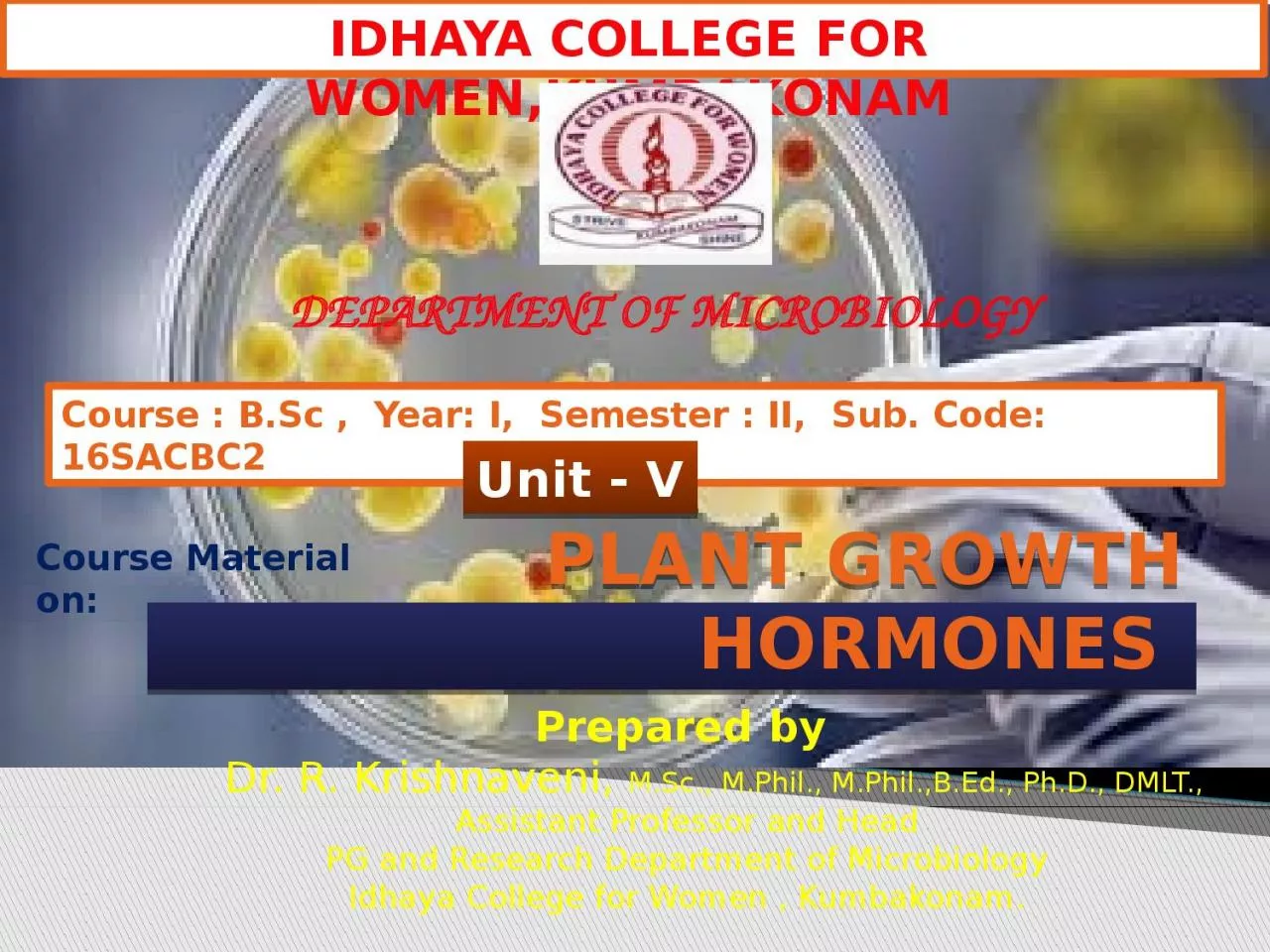PPT-IDHAYA COLLEGE FOR WOMEN,KUMBAKONAM
Author : CantTouchThis | Published Date : 2022-08-04
DEPARTMENT OF MICROBIOLOGY Course BSc Year I Semester II Sub Code 16SACBC2 Course Material on Prepared by Dr R Krishnaveni MSc MPhil MPhil BEd
Presentation Embed Code
Download Presentation
Download Presentation The PPT/PDF document "IDHAYA COLLEGE FOR WOMEN,KUMBAKONAM" is the property of its rightful owner. Permission is granted to download and print the materials on this website for personal, non-commercial use only, and to display it on your personal computer provided you do not modify the materials and that you retain all copyright notices contained in the materials. By downloading content from our website, you accept the terms of this agreement.
IDHAYA COLLEGE FOR WOMEN,KUMBAKONAM: Transcript
Download Rules Of Document
"IDHAYA COLLEGE FOR WOMEN,KUMBAKONAM"The content belongs to its owner. You may download and print it for personal use, without modification, and keep all copyright notices. By downloading, you agree to these terms.
Related Documents












![[DOWNLOAD] The College Bound Organizer: The Ultimate Guide to Successful College Applications](https://thumbs.docslides.com/1007675/download-the-college-bound-organizer-the-ultimate-guide-to-successful-college-applications-college-applications-college-admissions-and-college-planning-book.jpg)

